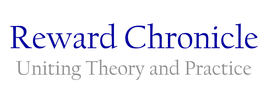|
There has been much debate by practitioners and academics alike on whether rewarding creativity is effective. To further the analysis of this dynamic, a study in China examined the relationship between creativity, reward, and performance. The researchers reviewed specific dimensions of creativity, and found that rewarding creativity can influence the type of creativity that is expressed.
Key Topics: Creativity; Performance; Compensation
Title of Reviewed Article: The Creativity-Performance Relationship: How Rewarding Creativity Moderates the Expression of Creativity
Researchers: Christina Sue-Chan and Paul S. Hempel (University of Hong Kong). Publication: Human Resource Management, 2016, Vol. 55 No. 4, pp. 637-653. __________________________________________________________________________ Setting the Scene Creativity has long been considered as central to such organizational outcomes as performance (Gilson, 2008), innovation (Shin & Zhou, 2007) and competitive advantage (Brockbank, 1999). Much of the organizational research uses Amabile's (1988) definition of creativity, which considers creativity as having two dimensions, novelty and usefulness. While both dimensions are clearly needed for creativity, there is a tension between them (Ford & Kuenzi, 2008), suggesting that the expression of either dimension may be more suited to different situations, for example evaluating vs finding solutions (Rietzschel, Nijstad, & Stroebe, 2006), and some prior research has suggested that various traits, states and cognitive processes can influence the two dimensions in different ways (e.g. Ford & Kuenzi, 2008). The researchers of this study argue that usefulness will be more closely linked to performance as it is typically closely linked to organisational goals, whereas novelty requires going beyond accepted norms and processes, and employees may fear punishment for their novelty unless they clearly perceive that they will be supported. In the examination of eliciting creativity, there has been considerable prior research on the role of extrinsic rewards, however there is much debate as to the importance of this type of reward (e.g. Hennessey & Amabile, 2010). The researchers of this study look to add to this debate by examining if rewards change the nature of creativity being expressed by employees, and by examining the relationship between job performance and creativity. The researchers posit a number of hypotheses: Hypothesis 1 – “Usefulness is more positively related to job performance than is novelty.” Hypothesis 2a – “Reward for creativity would moderate the relationship between novelty and performance, so that high levels of reward would be associated with a stronger (positive) relationship between novelty and performance.” Hypothesis 2b – “Reward for creativity would moderate the relationship between usefulness and performance, so that high levels of reward would be associated with a weaker relationship between usefulness and performance.” Hypothesis 2c – “The moderating role of reward for creativity in the creativity-performance relationship is more observable when novelty and usefulness are discrete rather than integrated in a single dimension.” How the research was conducted Data for this study was collected from employees and their supervisors in a hotel services company located in China. A sample of 310 employees reporting to 50 supervisors was used. The performance and creativity of subordinates was assessed by their supervisors. Creativity was assessed based on novelty and usefulness dimensions, as well as overall creativity. The researchers adapted existing creativity questionnaires (e.g., Choi, 2004; George & Zhou, 2001) in order to access these dimensions. Performance was assessed based on adherence to schedule, adherence to budget, and work excellence. Subordinates also completed a questionnaire which assessed whether they believed they were rewarded for creativity. Key Research Findings The results supported Hypothesis 1, as usefulness was found to be positively related to performance. Support was also found for both Hypothesis 2a and 2b. The results indicated that creativity positively moderated the relationship between novelty and performance, while negatively moderating the relationship between usefulness and performance. In relation to Hypothesis 2c, integrated creativity did not have a moderating effect on reward for creativity, thus supporting this hypothesis. Analysis also found that, under conditions of high levels of perceived reward for creativity, novelty had an effect on performance, while it was only under conditions of low levels of perceived reward for creativity that usefulness was found to effect performance. Results Commentary The results highlight that offering reward for creativity may not be a simple matter of being beneficial or detrimental to performance, but rather the performance outcome can depend on the dimension of creativity that is rewarded for. This finding is consistent with prior research which suggests that reward influences the types of goals that people will pursue (e.g. Kang &Yanadori, 2011). Novelty and usefulness are two such different goals (Lichtfield, 2008), and as such it is unsurprising that the results indicate that when people feel that creativity is not rewarded for, they shift focus to ensuring their usefulness is important in their performance, as that is perceived as being most valuable to the company. Conversely, when people feel that creativity is more likely to be rewarded, they look to ensure their novelty is related to performance. The results further indicate that when employees are directly rewarded for creativity, they will look to express both novelty and usefulness in applying their creativity to satisfying company objectives, but with an enhanced emphasis on novelty, which can be potentially detrimental to useful-oriented work behaviors. Organizational and Reward Implications The results demonstrate that companies must be mindful of the outcomes they want from creativity related reward programs, and that reward programs should be structured appropriately to ensure that employees are rewarded for the desired behaviours. For example, rewarding “creativity” could be misinterpreted as rewarding “novelty” only, and in such situations employees may give less regard for usefulness. This study indicates that companies may need different creativity related reward programs depending on whether the desired outcome is employees expressing their novelty or usefulness. When employees know that creativity will be rewarded this changes their perspective on what aspects of their behaviour needs to be emphasised. The researchers suggest that companies should reward creativity where they primarily want employees to express their novelty but should reward for performance if they primarily want employees to continue to express their usefulness. The results further indicate that offering rewards for creativity is an effective method to change the focus of employees from contributing useful ideas regarding maintaining established norms and processes to contributing novel ideas which can improve these norms and processes. Final Thoughts While much of the previous research on creativity and reward has examined creativity in a holistic way, this study takes a more nuanced view, examining dimensions of creativity and their relationship to reward, which yields interesting and valuable conclusions. To further generalize the results of this study it would be useful for future research to examine the relationships looked at in this study across a larger and more diverse set of companies. __________________________________________________________________________ Source Article: Sue-Chan, C., & Hempel, P. S. (2016). The Creativity-Performance Relationship: How Rewarding Creativity Moderates the Expression of Creativity. Human Resource Management, 55(4), 637-653. Published by: Wiley Periodicals, Inc. For further details and access to the full journal article Click Here (subscription or payment may be required). __________________________________________________________________________ References: Amabile, T. M. (1988). A model of creativity and innovation in organizations. In M. Staw & L. L. Cummings (Eds.), Research in organizational behavior (Vol. 10, pp. 123–167). Greenwich, CT: JAI. Brockbank, W. (1999). If HR were really strategically proactive: Present and future directions in HR’s contribution to competitive advantage. Human Resource Management, 38(4), 337–352. Choi, J. N. (2004). Person-environment fit and creative behavior: Different impacts of supplies-values and demands-abilities versions of fit. Human Relations, 57(5), 531–552. Ford, C., & Kuenzi, M. (2008). “Organizing” creativity research through historical analysis of foundational administrative science texts. In J. Zhou & C. E. Shalley (Eds.), Handbook of organizational creativity (pp. 65–92). New York, NY: Erlbaum. George, J. M., & Zhou, J. (2001). When openness to experience and conscientiousness are related to creative behavior: An interactional approach. Journal of Applied Psychology, 86(3), 513–524. Gilson, L. L. (2008). Why be creative: A review of the practical outcomes associated with creativity at the individual, group, and organizational levels. In J. Zhou & C. E. Shalley (Eds.), Handbook of Organizational Creativity (pp. 303–322). New York, NY: Erlbaum. Hennessey, B. A., & Amabile, T. A. (2010). Creativity. Annual Review of Psychology, 61, 569–598. Kang, S. C., & Yanadori, Y. (2011). Adoption and coverage of performance-related pay during institutional change: An integration of institutional and agency theories. Journal of Management Studies, 48(8), 1837–1865. Litchfield, R. C. (2008). Brainstorming reconsidered: A goal based view. Academy of Management Review, 33(3), 649–668. Rietzschel, E. F., Nijstad, B. A., & Stroebe, W. (2006). Productivity is not enough: A comparison of interactive and nominal brainstorming groups on idea generation and selection. Journal of Experimental Social Psychology, 42(2), 244–251. Shin, S. J., & Zhou, J. (2007). When is educational specialization heterogeneity related to creativity in research and development teams? Transformational leadership as a moderator. Journal of Applied Psychology, 92(6), 1709–1721. Comments are closed.
|
Popular Reward Chronicle Searches
Compensation. Pay for performance Benefits Millennials Exec compensation Motivation Gender Topics
All
Join The Reward Chronicle Team
Are you passionate about reward? We’d love to hear from you. Click here for more details on how to contact us. |








